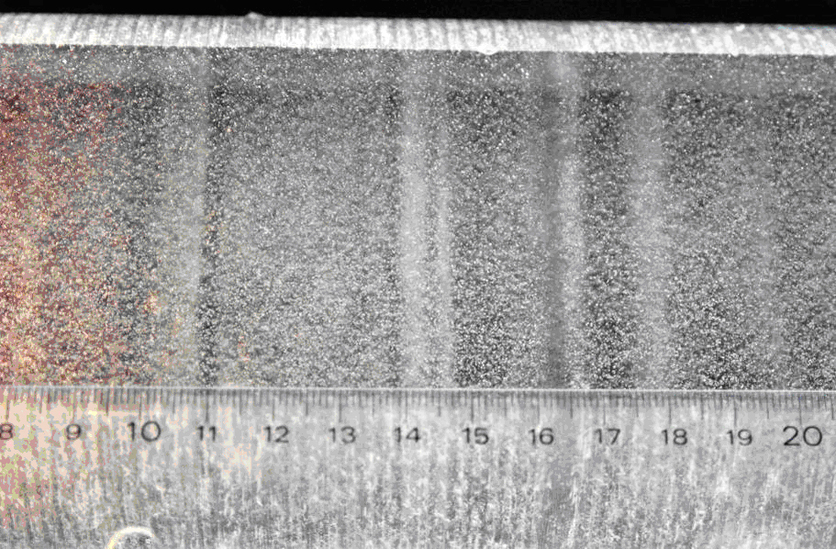Dr Katja Ridel’s interest has always been chemistry, and after she finished her PhD in Germany, she took on a position at NIWA in New Zealand. One of the projects she is working on is her research on ice cores from Antarctica. The team she is working with extracts air from ice cores to measure the relative concentrations of carbon dioxide, methane and nitrous oxide. They also analyse the isotopes in the gas. From that analysis, Katja and her team get information about the concentration of greenhouse gases in the atmosphere at the time the ice was formed.
But where is the air in the ice?
Katja explains that when snow falls to the ground, it first captures air between each snowflake. Glaciers like in Antarctica are usually formed from snowflakes that are gradually converted to ice. Like small feathers, the snowflakes land on top of each other, and the tips of the crystals get compacted and melt into globules that form an interconnected mass with air spaces between them. The melted and compacted snowflakes are now called firn. Later, the connections are sealed off, leaving visible bubbles in the ice. The change of snow to firn and eventually to solid ice with increasing depth is caused by the increasing weight of the ice.
This firn usually develops in snow that has survived the summer melt season without completely melting. The transition from snow to firn in the Antarctic may take several hundred years but this varies between the localities. While inland Antarctica has very little precipitation - snowfall is generally higher around the coastal areas. Katja says that usually it takes between 50 to 100 years before the channels between the snowflakes close off.
How do they measure the air?
Katja and her team get between 1–2 kg of an ice core, which gets crushed in a machine Katja calls the ‘cheesegrater’. This machine works in a vacuum – it shakes the ice vigorously and separates the ice from any gas that was contained in it.
The researchers measure the concentrations of atmospheric gases in the ice. This gives them information about how these gases have changed in the atmosphere over time. If carbon dioxide is high, it is usually an indication of higher temperatures. Katja explains that the oldest ice ever retrieved was about 950,000 years old. The team at NIWA, however, wants to look at ice cores that are much younger but they want to make very detailed descriptions.
Where does the ice come from?
Katja travelled to a place called Law Dome in Antarctica. This is not necessarily the nicest place to visit, with high snowfall and strong winds, and it is known for its foul weather. Katja is interested in Law Dome because snow accumulates there faster than in other places in Antarctica. The ice they are collecting is from about 150 metres – going back about 350 years to roughly 1670. The atmospheric gases that were trapped at that time will be from around 1730, as it took about 50-60 years for the snow to change to firn and for the channels that contain the gas to close off.
Katja is very excited about her research and hopes her findings will contribute to the discussions around greenhouse gases and their effect on the atmosphere.
Related content
The level 3 Connected article Captured in ice describes the work of glaciologist Nancy Bertler and how scientists investigate Earth’s climate in order to see the past and predict the future.
In 2012 scientists analysed sediment cores from Wilkes Land and found evidence of plants that only grow in warm climates. Read the article Tropical Antarctica to find out more about how these findings will increase our knowledge of climate system mechanisms.
Related content
Discover lots of great resources on ice cores from the AntarcticGlaciers.org website.

